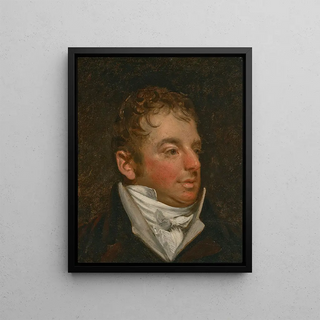Art print | Portrait of William Travis - John Constable


View from behind

Frame (optional)
William Travis Portrait - John Constable – Engaging Introduction
The "William Travis Portrait" by John Constable is a work that transcends the simple frame of painting to immerse the viewer in an atmosphere that is both intimate and historical. This painting, depicting an emblematic figure of his time, invites reflection on the values and struggles that marked the early 19th century. Through this portrait, Constable does not merely depict a man; he captures the essence of an era, the aspirations of a people, and the tensions of a society in transition. The depth of emotion and the vividness of the features make this work a true testament to its time, a frozen moment that continues to pique the interest of art enthusiasts.
Style and uniqueness of the work
Constable's style is distinguished by his meticulous attention to detail and his ability to breathe vibrant life into his subjects. In the "William Travis Portrait," the artist uses rich colors and delicate shadows to create an effect of depth and realism. Every brushstroke seems charged with emotion, and Travis's facial expressions reveal a palette of feelings ranging from determination to vulnerability. The composition is carefully balanced, highlighting the subject while subtly integrating elements of his environment. This approach allows for storytelling beyond mere appearances, inviting the viewer to ponder William Travis's experiences and aspirations. Constable's technical mastery, combined with his artistic sensitivity, makes this portrait an essential work that continues to fascinate.
The artist and his influence
John Constable, a major figure of British Romanticism, left a lasting mark on art history with his unique vision of landscape and portraiture. Born in 1776, he established himself as an innovator, challenging the conventions of his time. His approach to painting was deeply rooted in nature, but also in human realities. Constable firmly believed that art should reflect life, and it is this conviction that drove him to explore various themes, from bucolic landscapes to striking portraits. His influence extends well beyond his era, inspiring generations of artists who sought to capture the beauty and complexity of the ex

Matte finish

View from behind

Frame (optional)
William Travis Portrait - John Constable – Engaging Introduction
The "William Travis Portrait" by John Constable is a work that transcends the simple frame of painting to immerse the viewer in an atmosphere that is both intimate and historical. This painting, depicting an emblematic figure of his time, invites reflection on the values and struggles that marked the early 19th century. Through this portrait, Constable does not merely depict a man; he captures the essence of an era, the aspirations of a people, and the tensions of a society in transition. The depth of emotion and the vividness of the features make this work a true testament to its time, a frozen moment that continues to pique the interest of art enthusiasts.
Style and uniqueness of the work
Constable's style is distinguished by his meticulous attention to detail and his ability to breathe vibrant life into his subjects. In the "William Travis Portrait," the artist uses rich colors and delicate shadows to create an effect of depth and realism. Every brushstroke seems charged with emotion, and Travis's facial expressions reveal a palette of feelings ranging from determination to vulnerability. The composition is carefully balanced, highlighting the subject while subtly integrating elements of his environment. This approach allows for storytelling beyond mere appearances, inviting the viewer to ponder William Travis's experiences and aspirations. Constable's technical mastery, combined with his artistic sensitivity, makes this portrait an essential work that continues to fascinate.
The artist and his influence
John Constable, a major figure of British Romanticism, left a lasting mark on art history with his unique vision of landscape and portraiture. Born in 1776, he established himself as an innovator, challenging the conventions of his time. His approach to painting was deeply rooted in nature, but also in human realities. Constable firmly believed that art should reflect life, and it is this conviction that drove him to explore various themes, from bucolic landscapes to striking portraits. His influence extends well beyond his era, inspiring generations of artists who sought to capture the beauty and complexity of the ex






